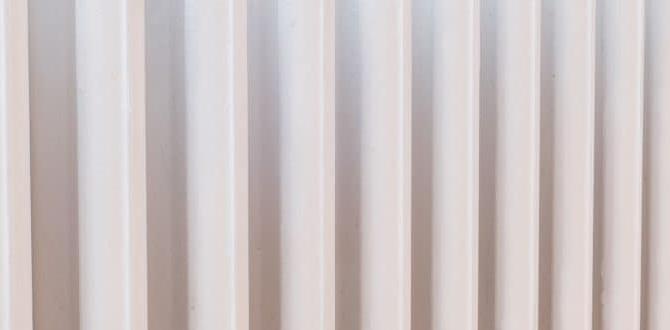Have you ever seen a vibrant green aloe plant thriving under the sun? These tough little plants are great for your garden, and learning how to care for an aloe plant outdoors can be a fun adventure. Aloe plants are not only beautiful, but they can also be useful. Did you know they can help soothe burns? But, like every plant, they need the right care to grow strong and healthy.
Imagine stepping into your garden and spotting your aloe plant standing tall and proud. You might wonder, what makes it grow so well? Caring for an aloe plant outdoors is easier than you think. With the right tips, you can provide everything it needs.
From picking the perfect spot to knowing when to water, each step makes a difference. So, if you’re ready to discover the best ways to nurture your aloe plant, let’s get started! Your garden will thank you.
How To Care For An Aloe Plant Outdoors: Essential Tips

How to Care for an Aloe Plant Outdoors
Caring for an aloe plant outdoors is simple and rewarding. These hardy plants thrive in bright sunlight. Give them well-draining soil to avoid root rot. Water sparingly—about every three weeks is enough. Did you know that too much water can harm them? Aloe plants are drought-tolerant and love heat! Protect them from frost during cold months. With these tips, your outdoor aloe will flourish and look beautiful year-round!Choosing the Right Location
Importance of sunlight for aloe growth. Factors to consider: temperature, humidity, and shelter.To help your aloe plant thrive, choosing the right spot is key. Aloe loves sunshine, so pick a place that gets plenty of light. A cozy corner in your garden or balcony works well! Keep an eye on temperature and make sure it doesn’t drop below 50°F. Aloe also prefers low humidity, so avoid overly wet areas. And remember, a little shelter from harsh winds can keep your plant happy. It’s like giving it a warm hug!
| Factors | Recommendations |
|---|---|
| Sunlight | Looks for 6-8 hours of bright light. |
| Temperature | Keep it above 50°F. |
| Humidity | Prefer dry conditions. |
| Wind | Avoid strong winds; a shelter is best! |
Soil Requirements
Best types of soil for aloe plants. Tips for improving drainage and aeration.Aloe plants thrive in well-drained soil that keeps their roots happy. The best types for them are sandy or cactus mix soils. These mixes let water flow through like a slide at a water park, keeping roots dry and avoiding rot. Want to boost drainage? Mix in some perlite or pumice. This is like giving your aloe a pair of aerated sneakers! Check out the table below for quick tips:
| Soil Type | Benefits |
|---|---|
| Sandy Soil | Great drainage and airflow |
| Cactus Mix | Designed for desert plants |
| Perlite Mix | Increases aeration and drainage |
Good soil choice will keep your aloe plant smiling and growing! After all, a happy plant makes a happy gardener.
Watering Practices
Understanding aloe’s water needs. Signs of overwatering vs. underwatering.Aloe plants like warm weather but care for their water needs is key. They thrive with dry soil, not soggy roots. Water them every two to three weeks. Look for signs of overwatering like yellow leaves or mushy stems. On the other hand, underwatering can lead to shriveled leaves and slow growth. Knowing when to water keeps your aloe healthy.
What are the signs of overwatering and underwatering for aloe?
Signs of overwatering: Yellow leaves, mushy stems, and a bad smell from the soil. Signs of underwatering: Shrinking or wrinkled leaves, dry tips, and slower growth. Keep an eye on these cues to help your aloe thrive!
Fertilizing Your Aloe Plant
Recommended fertilizers for outdoor aloe plants. Frequency and method of application.Giving your aloe plant the right food is important. Use a balanced, water-soluble fertilizer. Recommended options include a 10-10-10 or 20-20-20 fertilizer. Apply it every 4-6 weeks during the growing season. Make sure to dilute the fertilizer before applying. Too much can harm your plant.
How often should you fertilize aloe plants?
You should fertilize your outdoor aloe plant **every 4-6 weeks** during the warm months to keep it healthy and growing strong.
Best practices for fertilizing:
- Use a diluted, balanced fertilizer.
- Water the plant before fertilizing.
- Monitor for any signs of over-fertilization.
Pest and Disease Management
Common pests affecting outdoor aloe plants. Preventative measures and treatment options.Outdoor aloe plants can face pests and diseases. Common pests include mealybugs, aphids, and spider mites. These pests suck the juice from plants, making them weak. To keep your aloe safe, check the leaves often. You can spray them with water or use insecticidal soap. Here are some simple steps to help:
- Keep your aloe in a sunny spot.
- Avoid overwatering.
- Remove dead leaves regularly.
With these tips, your aloe will stay healthy and happy!
What are the common pests affecting outdoor aloe plants?
Mealybugs, aphids, and spider mites are the most common pests that can harm outdoor aloe plants.
What are the treatment options for aloe plant pests?
Insecticidal soap and water sprays can effectively treat pests on aloe plants, keeping them healthy.
Pruning and Maintenance
When and how to prune your aloe plant. Tips for maintaining plant health and appearance.Cutting back your aloe plant helps it grow strong and healthy. Late spring or early summer is the best time to prune. Snip off dead or brown leaves at the base. This keeps your plant looking fresh and tidy. Maintain a sunny spot and water sparingly. Remember, too much love (or water) can drown your aloe. To help you remember, here’s a simple table:
| Pruning Tips | Maintenance Tips |
|---|---|
| Prune in spring | Water lightly |
| Remove dead leaves | Provide plenty of sunlight |
| Use sharp scissors | Use well-draining soil |
Keep these in mind, and your plant will be the star of the garden. Remember, even cacti get lonely!
Winter Care for Outdoor Aloe
Strategies for protecting aloe plants in colder months. Signs that outdoor conditions are too harsh.As winter sneaks in, it’s time to give your aloe plant some extra love. First, bring your aloe indoors if the temperature drops below 40°F (4°C). Aloe plants are not fans of the cold; they may shiver and turn mushy! Look for signs like drooping leaves or brown spots—those are clues that the weather is too rough for your plant.
To help your aloe survive, keep it in a sunny spot. A windowsill works great! If it’s stuck outside, wrap it in a blanket or put it in a covered area. Remember, even aloes need their beauty sleep!
| Signs of Cold Stress | What to Do |
|---|---|
| Drooping leaves | Bring indoors! |
| Brown spots | Check for frost! |
Repotting and Propagation
Best practices for repotting aloe plants. Methods for propagating aloe plants from offsets.Repotting aloe plants is like giving them a cozy new home! Choose a pot that’s just a bit bigger. Make sure it has holes for water to escape. Gently take out the plant and shake off old dirt. You don’t want to stress them out too much! Now, let’s talk about offsets. Those little baby aloes popping up? They’re ready to make new friends! Cut them off carefully and plant them in their own pots. They’ll be happy to spread their green love.
| Best Practices | Details |
|---|---|
| Pot Size | Choose a pot 1-2 inches bigger than the last one. |
| Soil Type | A well-draining mix works best! |
| Offset Care | Let offsets dry for a day before planting. |
Conclusion
Caring for an aloe plant outdoors is easy! Remember to find a sunny spot and use well-draining soil. Water it only when the soil is dry. Protect your plant from frost and pests. By following these steps, you’ll help your aloe thrive. For more tips and fun facts, keep exploring gardening resources. Happy planting!FAQs
What Are The Ideal Outdoor Conditions For Growing An Aloe Plant, Including Temperature And Sunlight Requirements?To grow an aloe plant outdoors, you need warm temperatures and bright sunlight. Aloe likes to be between 60 and 80 degrees Fahrenheit. Make sure your plant gets at least six hours of sunlight each day. If it’s too cold or shady, the aloe may not grow well.
How Often Should I Water My Aloe Plant When It’S Grown Outdoors, And What Signs Indicate It Needs More Or Less Water?You should water your aloe plant about once every two to three weeks when it’s outdoors. Make sure the soil dries out completely before watering again. If the leaves look wrinkled or shriveled, it needs more water. If the leaves are turning brown or mushy, it might be getting too much water.
What Type Of Soil Is Best For Planting Aloe Outdoors, And Should I Consider Using Any Amendments?The best soil for planting aloe outdoors is sandy soil. This type helps water drain quickly. You should add some small rocks or perlite to the soil. This makes it even better for your aloe plant. Lots of air and drainage help them grow strong!
How Can I Protect My Outdoor Aloe Plant From Pests And Diseases That May Affect Its Growth?To protect your outdoor aloe plant, you should check it often for bugs. If you see pests, remove them gently by hand. You can also spray your plant with water to get rid of tiny insects. Keep your plant in a sunny spot, as good light helps keep it healthy. Finally, don’t water it too much, because too much water can cause problems.
When Is The Best Time To Transplant An Aloe Plant Outdoors, And How Can I Ensure A Smooth Transition?The best time to transplant an aloe plant outdoors is in spring or early summer. This is when it’s warm and sunny. To help your plant move, water it a day before. Carefully dig it up and place it in a hole the same size as its pot. Give it extra water after planting to help it settle in.







